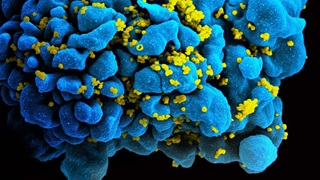10 At-Risk Animals Underscore the Importance of World Wildlife Day
Our Instagram feed helps to celebrate, raise awareness on variety of species
March 3 is officially recognized as World Wildlife Day by the United Nations. But on the @PewEnvironment Instagram feed, every day is a day to celebrate wildlife. From protecting penguins in Antarctica to safeguarding whales in the Arctic, Pew is working around the world to conserve wild places and the animals that depend on them.
These are just a few of the creatures we've encountered in the course of our conservation work. For more wild places and furry, scaly, and feathery wildlife, follow us on Instagram.
1. Emperor Penguin
Fossil records show that emperor penguins probably began their evolution around the dinosaur era. But as one of the most ice-dependent of all penguin species, these birds face grave threats in a changing environment.
The future of the emperor penguin, which is listed as near threatened, depends on the world coming together to protect more of its Antarctic habitat.
© John Weller
2. Sea otter
Did you know that sea otters help maintain the health and stability of their nearshore marine ecosystem? They do so by feeding on urchins, crabs, and other animals that would otherwise disrupt the ecosystem's delicate balance.
The recently expanded California Coastal National Monument further protects an important habitat for endangered sea otters, ensuring healthier marine and coastal ecosystems.
© Bureau of Land Management
3. Galapagos tortoise
Mrs. T, a Galapagos tortoise whose species is vulnerable, has lived in the wild since her introduction to Pitcairn Island sometime between 1937 and 1951. At approximately 320,465 square miles (830,000 square kilometers), the small island chain she calls home is at the center of one of the largest areas of protected ocean on the planet.
© The Pew Charitable Trusts
4. Thresher shark
Imperiled thresher sharks come to Monad Shoal, off the coast of Malapascua, in the Philippines, for its spalike benefits. There, cleaner wrasses and moon wrasses eat the sharks' dead skin and bacteria.
Divers from around the world follow sharks to the spot, which helps to boost Malapascua's economy and create careers in shark tourism for many of the locals.
© Steve DeNeef
5. Mountain goat
Nimble mountain goats can leap up to 12 feet high and climb to dizzying heights, such as Idaho's 7,009-foot Scotchman Peak (pictured).
The state has the largest area of rugged, wild, and roadless U.S. acreage outside of Alaska and provides ample habitat for wildlife. That's why we're working to protect 13,900 acres in Idaho as the Scotchman Peaks Wilderness, the highest level of conservation protection given to U.S. federal lands.
© Tom Tuttle/Friends of Scotchman Peaks
6. Hawaiian monk seal
Endangered Hawaiian monk seals are the only marine mammals wholly dependent on coral reefs. They're also found on just one place on Earth: off the coast of Hawaii.
Luckily, their home received new protections last year, when the U.S. expanded Papahānaumokuākea Marine National Monument to become one of the largest marine protected areas on Earth.
© NOAA
7. Bowhead whale
With a layer of blubber up to 1.6 feet thick, bowhead whales are perfectly suited to life in and around Arctic waters.
Increased shipping traffic can be a challenge to these whales, but they received a break last year thanks to indigenous communities in the Northern Bering Sea. These tribes requested—and received—new protections for this important Arctic habitat.
© NOAA
8. Squat lobster
True to its name, the squat lobster looks like a slightly flattened version of the common lobster. But genetically, it's actually more similar to a hermit crab.
These crustaceans are among the host of animals that live among deep-sea corals, such as those found in an underwater canyon off the U.S. Atlantic coast (pictured). The brand-new Frank R. Lautenberg Deep-Sea Coral Protection Area will help safeguard many of these fragile corals—and the creatures that call them home.
© NOAA
9. Kaibab squirrel
The tassel-eared Kaibab squirrel lives among the ponderosa pine forests of Arizona's Grand Canyon watershed and nowhere else in the world. We're working with local groups to protect the region—and its natural beauty, recreational opportunities, and critical wildlife habitat—for future generations.
© Steven Love
10. Whooping crane
A giant among birds, the endangered whooping crane stands almost 5 feet tall and has a 7-foot wingspan.
Canada's boreal forest is one of the largest intact forest ecosystems on Earth and a crucial habitat for these and other birds. We're working to protect more of Canada's boreal forest to give birds like these room to spread their wings and soar.
© Shutterstock
Tom Wathen is a vice president, directing Pew's environmental work in ocean conservation and land protection.











